Metrics Ventures Research Report: Alex Lab, Unlocking the Huge Potential of Bitcoin DeFi and BRC-20
Author: Charlotte, Kevin, Metrics Ventures
TL;DR
Inscriptions have fully ignited the narrative of the Bitcoin ecosystem, but the explosive popularity of inscriptions has also brought issues such as insufficient infrastructure and congested transactions back into the public eye. After inscriptions, the market has begun to explore the infrastructure and functional products of the Bitcoin ecosystem. Due to the limitations of the Bitcoin network itself, smart contract products can only be developed within scaling solutions.
Alex Lab is a DeFi infrastructure built on Bitcoin's second layer, Stacks, and has launched and is developing a series of functions including Bitcoin oracles, Bitcoin bridges, AMM, order books, staking, and Launchpad, creating a complete DeFi basic suite.
From a competitive landscape perspective, Alex Lab is the absolute leader on Stacks. Compared to other scaling solutions, Stacks is currently the healthiest second-layer scaling solution in terms of ecosystem and data growth, with Rootstock being its comparable counterpart. Sovryn is the leading DeFi protocol on Rootstock, but their current business focuses are different.
The Nakamoto upgrade and the issuance of sBTC are expected to launch in the first quarter of 2024. The Nakamoto upgrade will bring comprehensive improvements to Stacks' performance, and sBTC will unlock new opportunities for Bitcoin DeFi. Alex Lab will be the best target for laying out this upgrade.
Considering ALEX's valuation and TVL, ALEX can serve as a leveraged target for investing in the STX ecosystem. ALEX has not yet been listed on major CEXs, which presents a certain liquidity discount, and future listings may lead to an increase in its price.
1. Introduction: Where is the Next Alpha in the Bitcoin Ecosystem After Inscriptions?
The domino effect of the explosive popularity of inscriptions showcases the potential of the Bitcoin blockchain. If there were debates about the legitimacy of building a Bitcoin ecosystem a few months ago, this issue now seems to have been diluted by extremely high market enthusiasm—people have higher expectations for the Bitcoin ecosystem. The focus on the Bitcoin ecosystem began with inscriptions but will not stop at memes; after inscriptions, the market will start to explore the infrastructure and functional products of the entire ecosystem.
Firstly, the explosive popularity of inscriptions has also brought long-standing issues in the Bitcoin ecosystem back into the public eye. The infrastructure construction on the Bitcoin ecosystem is severely insufficient, greatly limiting the trading of BRC-20 tokens. Binance Research also mentioned in its report on BRC-20 that the deployment of decentralized indexing and fully functional DEXs will lead BRC-20 to the next height. Secondly, the extremely low TPS and block capacity of Bitcoin have caused extreme congestion and high transaction fees, which also restricts the issuance and trading of inscriptions, bringing discussions about Bitcoin scaling solutions back into the market spotlight.
Additionally, as the BTC halving approaches, discussions about the sustainability of BTC miner revenues have resurfaced. Miner revenues consist of transaction fees and mining rewards, and due to the limited ecological applications on the Bitcoin network, the vast majority of current revenues come from mining rewards. As the market cap of BTC decreases, the mining rewards after the halving may not be able to support the security of the BTC network in the long term. Expanding BTC ecological applications may introduce continuous transaction fees, providing sustainable income sources for Bitcoin miners.
At the same time, the Bitcoin blockchain is the most consensus-driven, legitimate, secure, and decentralized blockchain. Establishing smart contracts on the Bitcoin network will be an inspiring narrative. However, Bitcoin itself lacks Turing completeness and cannot support the establishment of smart contracts. To expand the potential of the Bitcoin blockchain, we must currently look towards Bitcoin L2. Unlike Ethereum, the experience of Bitcoin smart contracts does not involve users choosing between L1 and L2; L2 is currently the essential technology that grants Bitcoin smart contract capabilities. The main L2s include Lightning Network, Stacks, Rootstock, and Liquid.
Thus, Alex Lab has entered our field of vision. Alex is built on Stacks, which serves as the smart contract layer for Bitcoin and is currently the most prosperous and highest-valued ecosystem among Bitcoin's second layers. Alex is the leading DeFi protocol on Stacks. Alex Lab is dedicated to building a DeFi system for Bitcoin, having launched and is developing functions including BRC-20 token indexing, Bitcoin bridges, AMM, order books, staking, Launchpad, and a series of functions, initially constructing a complete set of DeFi ecosystem functionalities, providing a comprehensive infrastructure guarantee for the development of inscriptions and BRC-20 tokens.
2. Deconstructing Alex Lab: The Infrastructure Leader of Bitcoin DeFi
Alex Lab provides a rich array of products centered around Bitcoin ecosystem finance, with core products including: AMM and Orderbook DEX for trading; a Launchpad for discovering and participating in IDOs within the Stacks ecosystem; staking and liquidity mining; cross-chain bridges connecting Bitcoin L1 and L2 as well as Stacks and other chains; and a Bitcoin oracle for decentralized indexing of BRC-20.
AMM and Orderbook
Alex Lab has launched both AMM Swap and the B 20 market (Orderbook). We will not delve into the specific mathematical curves of AMM here. Currently, there are 5 pools on AMM with liquidity exceeding $1M, which are: STX-aBTC ($2.71M), STX-ALEX ($23.76M), STX-xBTC ($5.84M), STX-sUSDT ($1.49M), and ALEX-atALEX ($6.82M).
The B 20 market is in the form of an order book, utilizing a hybrid on-chain/off-chain design. Commitments to buy or sell certain assets are transmitted via cryptographic signatures, matched by an off-chain matching engine before being settled on-chain, allowing users to create and cancel orders without paying gas fees. Currently, multiple BRC 20 token-sUSDT trading pairs are live. The 24-hour trading volume for the B 20 market is 675k, with a cumulative trading volume of 55.8M.

Launchpad Platform
Alex Launchpad adopts a hybrid on-chain/off-chain model, providing an IDO platform for BRC-20 tokens. All transactions related to user funds are on-chain, while the costlier lottery portion is completed off-chain and submitted to the on-chain contract for verification. The community can vote to govern which projects will undergo IDO. So far, 5 IDO projects have been completed:
ALEX (2022.1.19)
BANANA (2022.6.21)
ORMM (2023.7.28, BRC 20 token)
Bluewheel Mining (2023.8.25)
CHAX (2023.11.13, BRC 20 token)
Currently, there are few ecological projects on Stacks, and even fewer token issuance projects, so ALEX's Launchpad has not yet demonstrated much ecological value.
Recently, Alex upgraded to a multi-chain Launchpad, allowing projects to issue on BRC 20, Stacks, and ERC 20. Currently, the first candidate project for the ALEX multi-chain Launchpad is OrdzGames, a gaming project on the Bitcoin network, with community voting set to conclude on December 23.
Staking and Liquidity Mining
The staking yield of Alex Lab's native token is significantly related to whether automatic staking is chosen (see the tokenomics section). Currently, the total amount staked is 143.6M, with a circulating supply of 642.1M, giving a ratio of 22.4%.
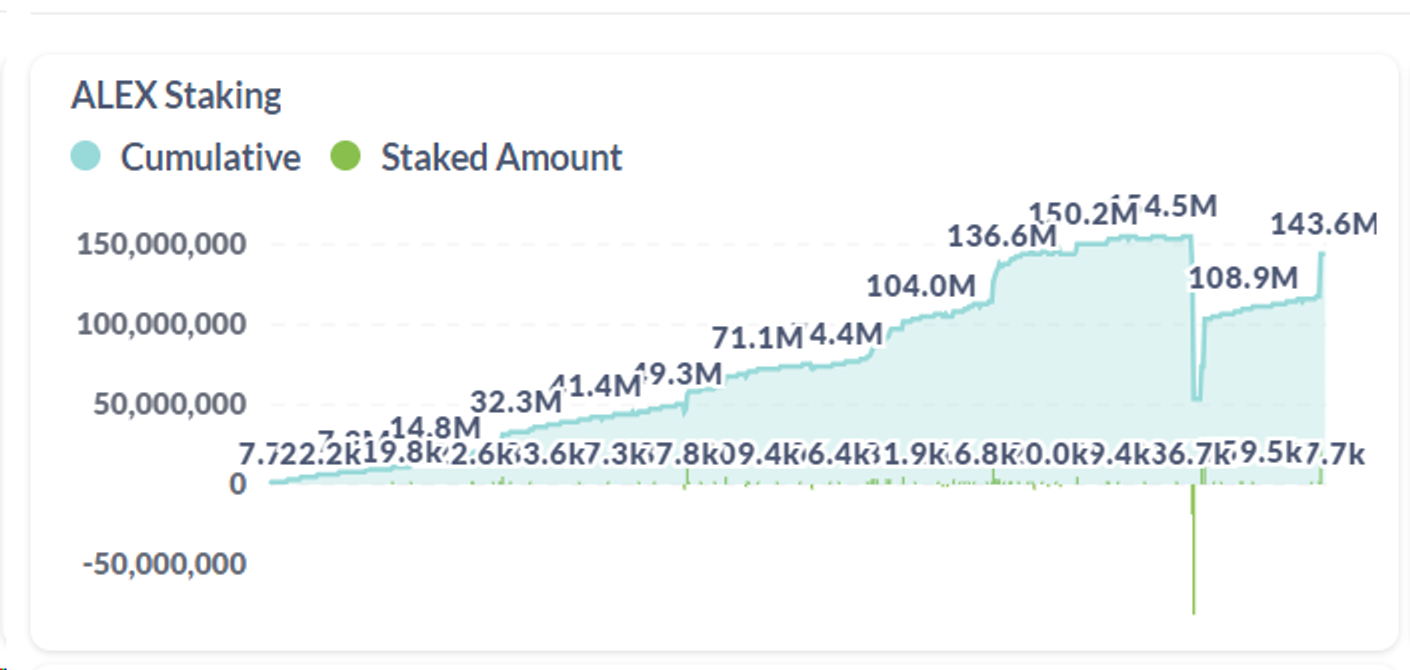
Users can also choose to stake LP tokens for liquidity mining. The main LP pairs currently are STX-ALEX and STX-xBTC, with current APRs of 34.94% and 63.6%, respectively, distributed in ALEX tokens, but staking performance has not been ideal.
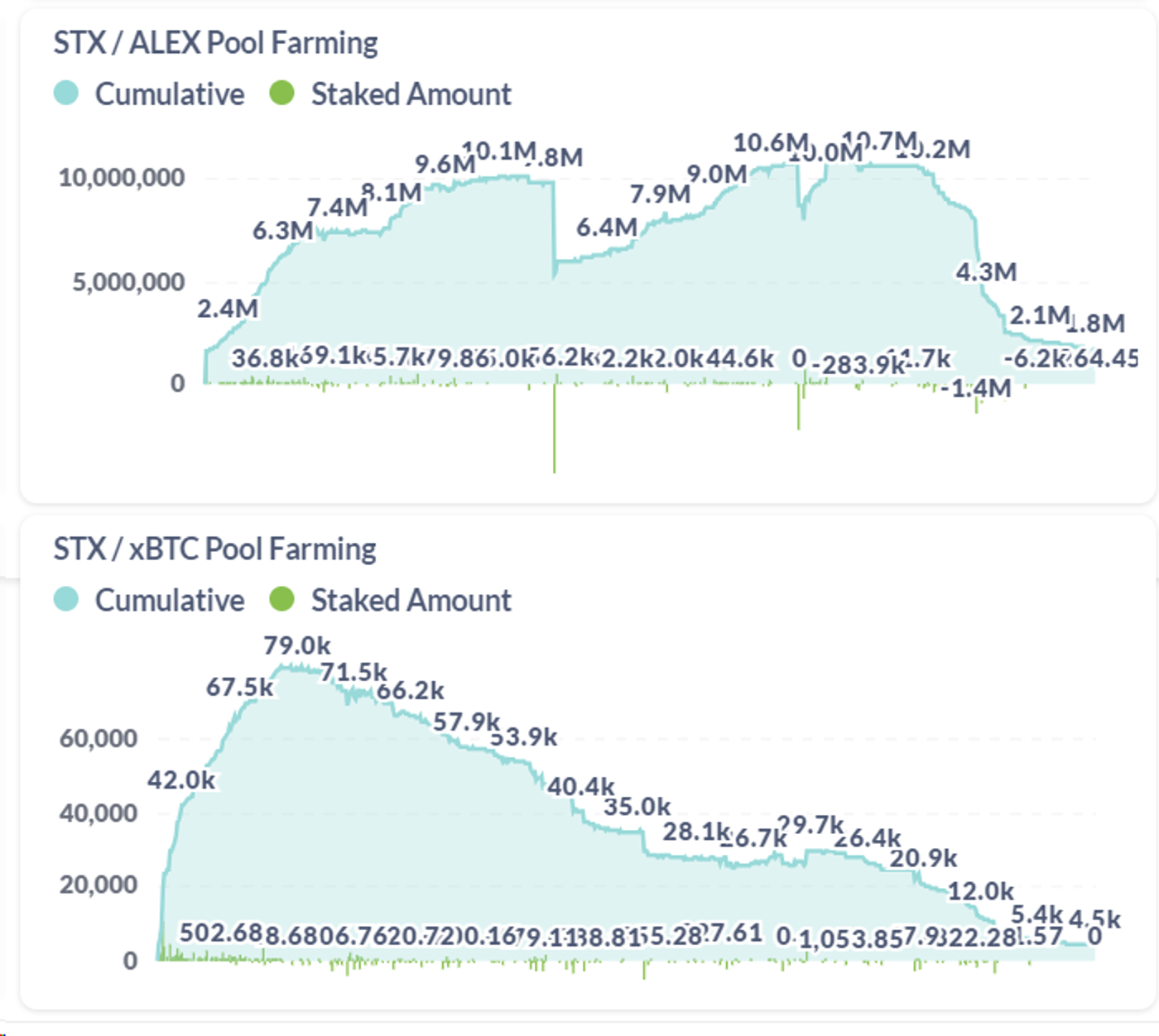
Cross-Chain Bridge
Alex Lab is currently developing cross-chain bridges between Stacks and the Bitcoin network, Ethereum, and BSC Mainnet, supporting the bridging of BTC and BRC-20 tokens with Bitcoin L1, and supporting USDT, LUNR, and BTCB (BSC)/WBTC (Ethereum) with Ethereum and BSC. The total cross-chain value accumulated so far is $11,568,749, generating total cross-chain fees of $76,067, with a current TVL of $2,324,830.
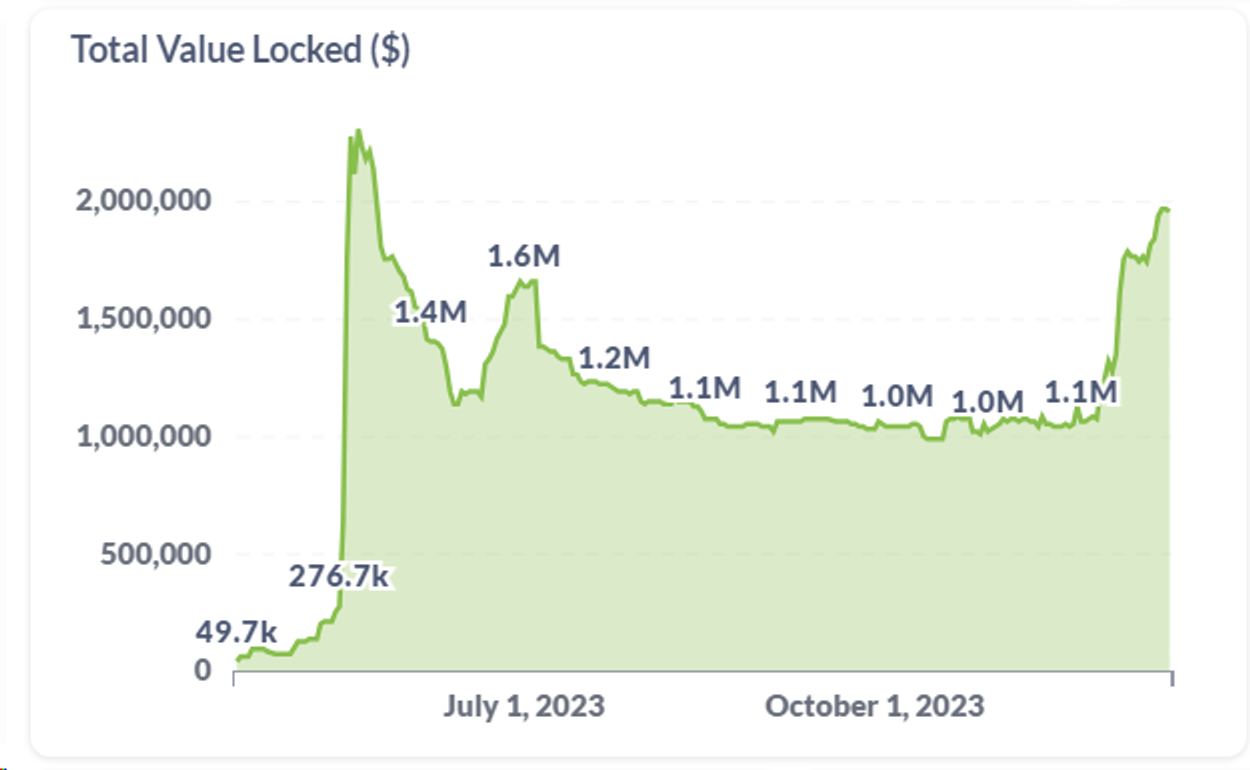
Bitcoin Oracle
The Bitcoin oracle mentioned here is different from the oracles commonly referred to on Ethereum; it currently refers to establishing a decentralized, tamper-proof, and censorship-resistant index for BRC-20 on Bitcoin. Although BRC-20 exists entirely on-chain, Bitcoin L1 does not natively support BRC-20 tokens and cannot read inscription data.
Users who have interacted with inscriptions and BRC-20 tokens know the importance of indexing, which indicates which inscriptions have been completed while also recording transfers and other operations, forming the foundation for building the BRC-20 market. Currently, the BRC-20 market relies on centralized off-chain indexers, and errors from a single indexer can arise from performance issues or even censorship or malicious actions, putting user assets at risk.
Therefore, Alex Lab is collaborating with Domo, the founder of the BRC-20 token standard, as well as existing major off-chain indexers (such as BestinSlot, OKX, Hiro system, Unisat, etc.) to build an on-chain index for BRC-20. Specifically, the Bitcoin Oracle aggregates data from off-chain indexers and then verifies each transaction through Stacks, choosing to accept or reject it, providing a single, reliable source of truth that DApps and wallets can efficiently access and query. Recently, Alex's official Twitter announced that the Bitcoin oracle will support STX 20.
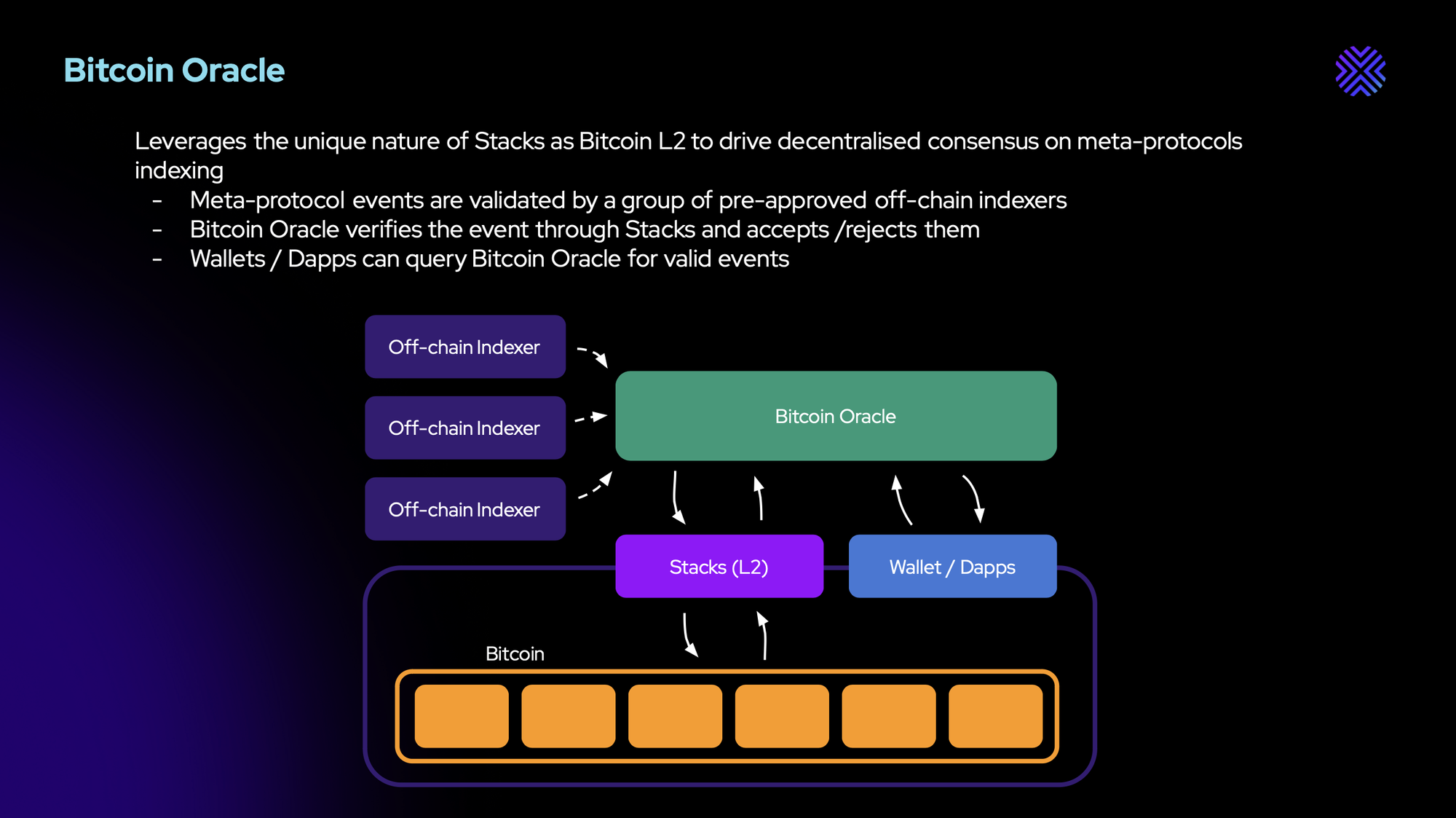
3. Competitive Landscape: The Absolute Leader of Bitcoin DeFi
Alex Lab currently has no competitors on Stacks, so the analysis of the competitive landscape needs to look at the entire BTC Layer 2 to find Alex's opponents, starting with identifying Stacks' competitors.
Currently, the main Bitcoin second-layer networks include Lightning Network, Rootstock, Stacks, and Liquid Network. According to a report from Crypto.com, they have the following performance differences:
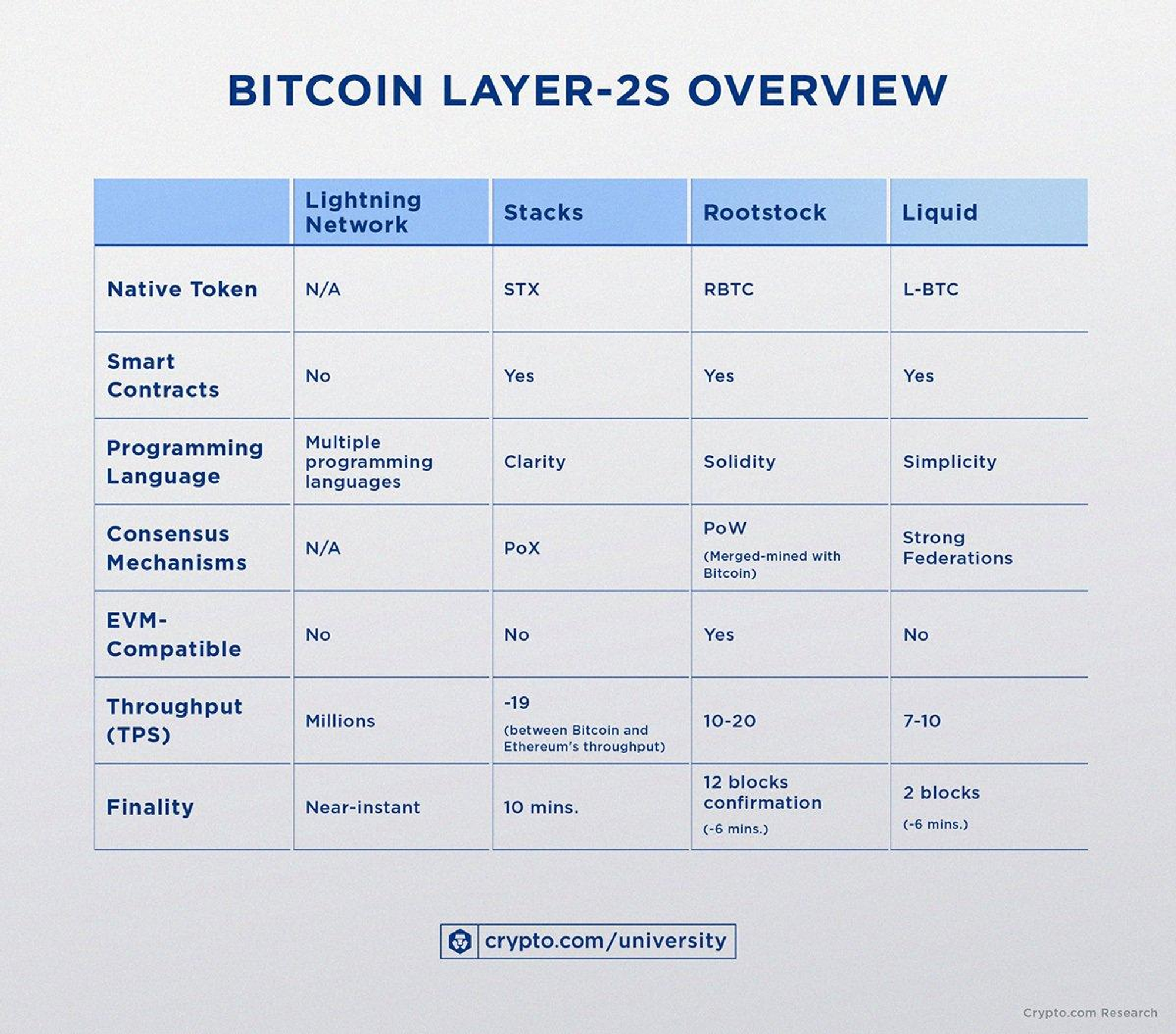
Stacks is the most prosperous ecosystem among Bitcoin scaling solutions. Lightning Network, as a payment channel, cannot support the construction of smart contracts, so it is not a direct competitor to Stacks. The consensus mechanism of Liquid Network leads it to be regarded as a highly centralized protocol, making it difficult to inherit the legitimacy of the BTC network. Currently, Rootstock has the most direct competitive relationship with Stacks. Rootstock is an EVM-compatible sidechain on Bitcoin, allowing Bitcoin miners to engage in merged mining and earn transaction fee income from Rootstock. The advantage of Rootstock is its EVM compatibility and early start, currently having a higher TVL (as of 2023/12/17), but in contrast, Stacks has a more decentralized technical advantage and faster data growth and ecosystem development speed.
Technically, Stacks will introduce decentralized pegged sBTC after the Nakamoto upgrade, while RSK's BTC cross-chain relies on trust in a pre-established alliance, which poses centralization issues. After the Nakamoto upgrade, Stacks will introduce subnets, supporting more languages and execution environments.
In terms of data, Stacks' TVL has rapidly grown after 2023, already matching its previous high, while Rootstock's data growth has been relatively slow, currently only reaching 50% of its previous high.
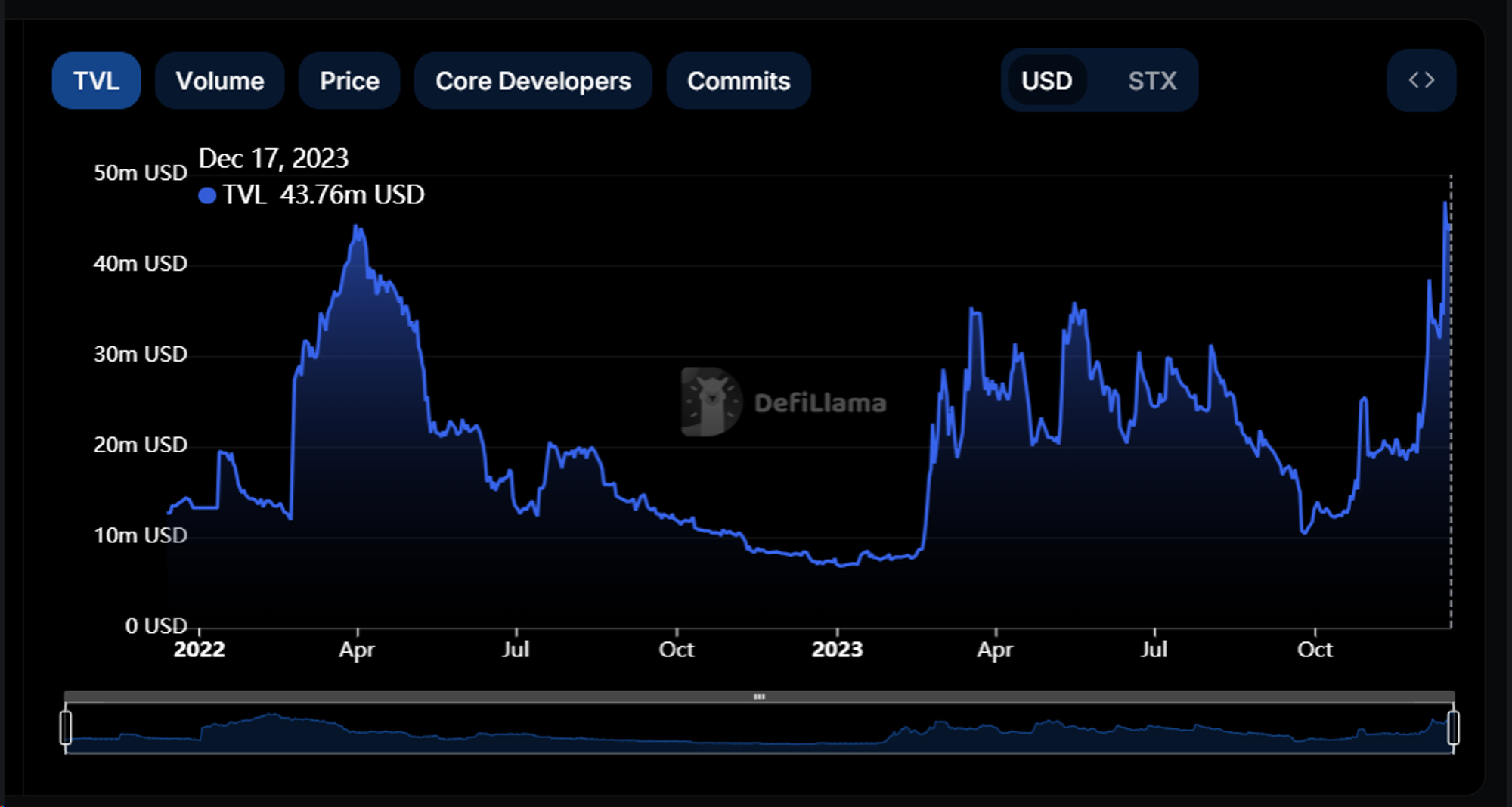
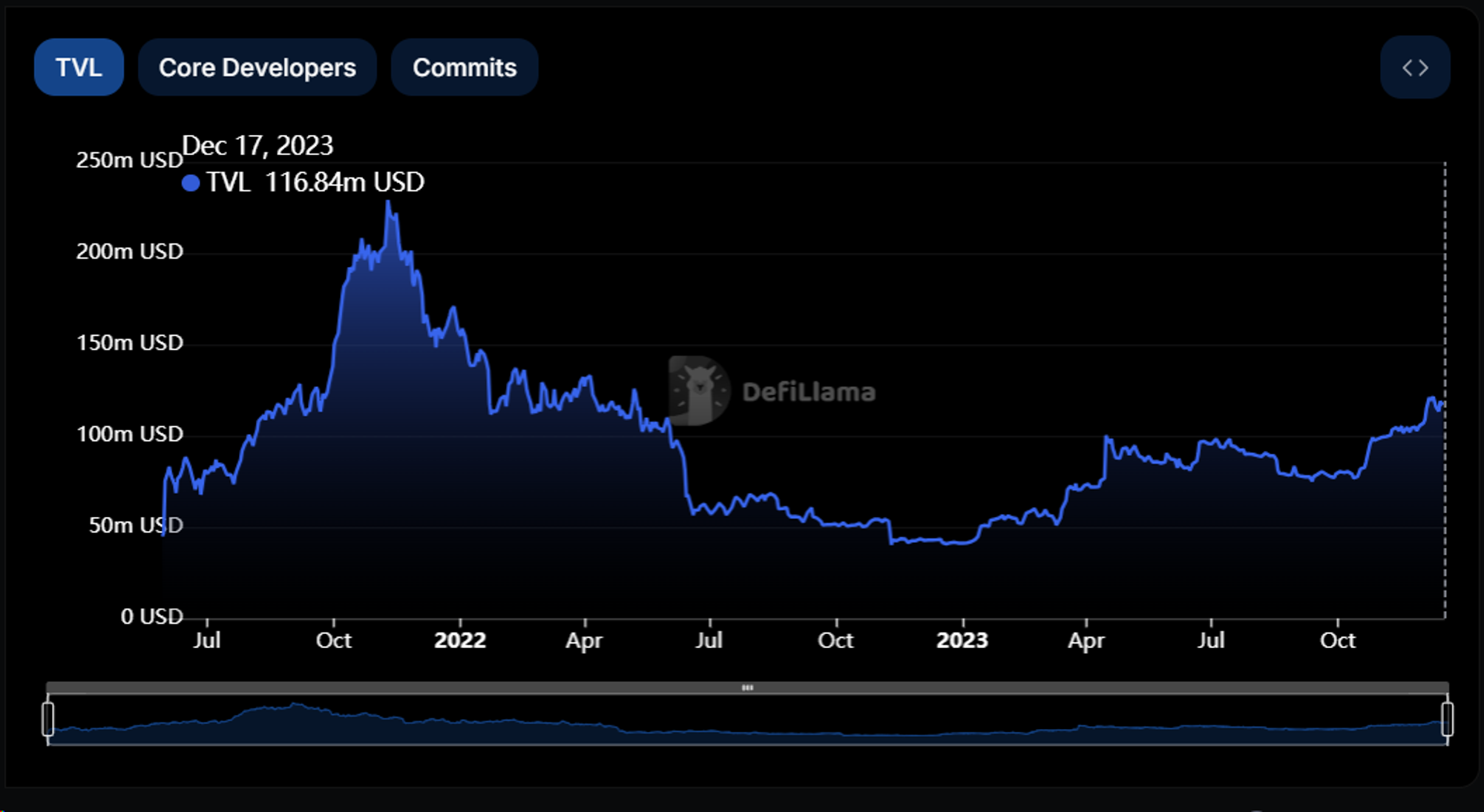
- In terms of ecosystem development, according to veDAO's statistics on the Bitcoin ecosystem (https://docs.google.com/spreadsheets/d/1DcGIbjZX3gDDwF2wqTHijOftss4j1UxeciJuT2Y6Ebk/edit#gid=1323064746), there are relatively few projects on Rootstock, with the main four DApps being Sovryn, Money on Chain, Liquality, and Tropykus. Liquality serves as wallet infrastructure, while the other three are basic DeFi applications. The Stacks ecosystem is flourishing, with veDAO statistics showing that over 60 DApps have been launched, covering DeFi, wallets, NFTs, games, social applications, and more.
The largest DEX on Rootstock is Sovryn, which can be seen as a competitor to Alex Lab. Sovryn provides almost a full suite of DeFi services, including stablecoins, AMM, lending pools, and margin trading. However, there are differences in their business focuses; Sovryn primarily focuses on stablecoins in the Bitcoin ecosystem, while Alex's recent development focus has been on providing infrastructure for BRC-20 tokens. In terms of data performance, Sovryn's TVL growth has been sluggish, while Alex Lab has been riding the wave of BRC-20's resurgence.
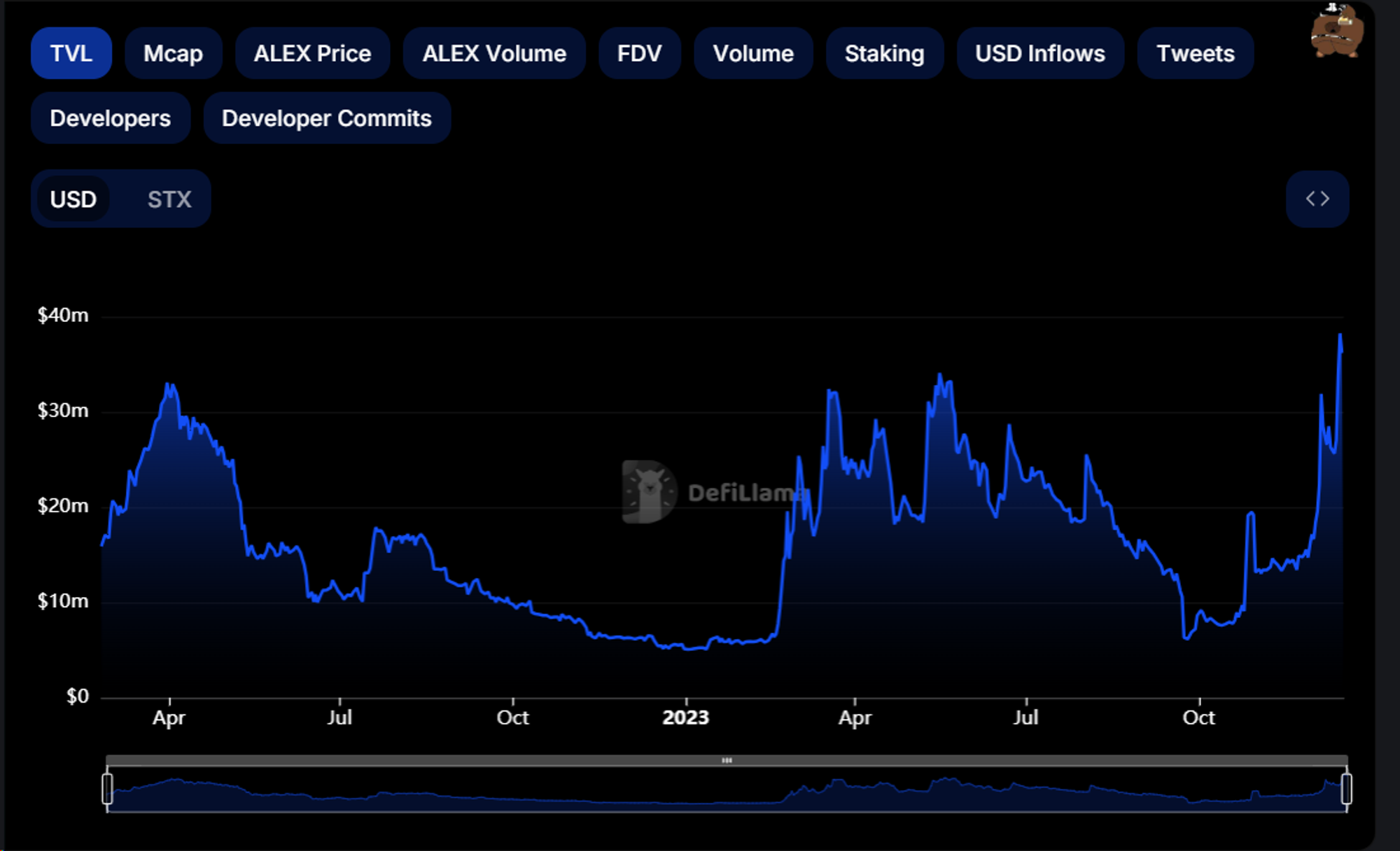
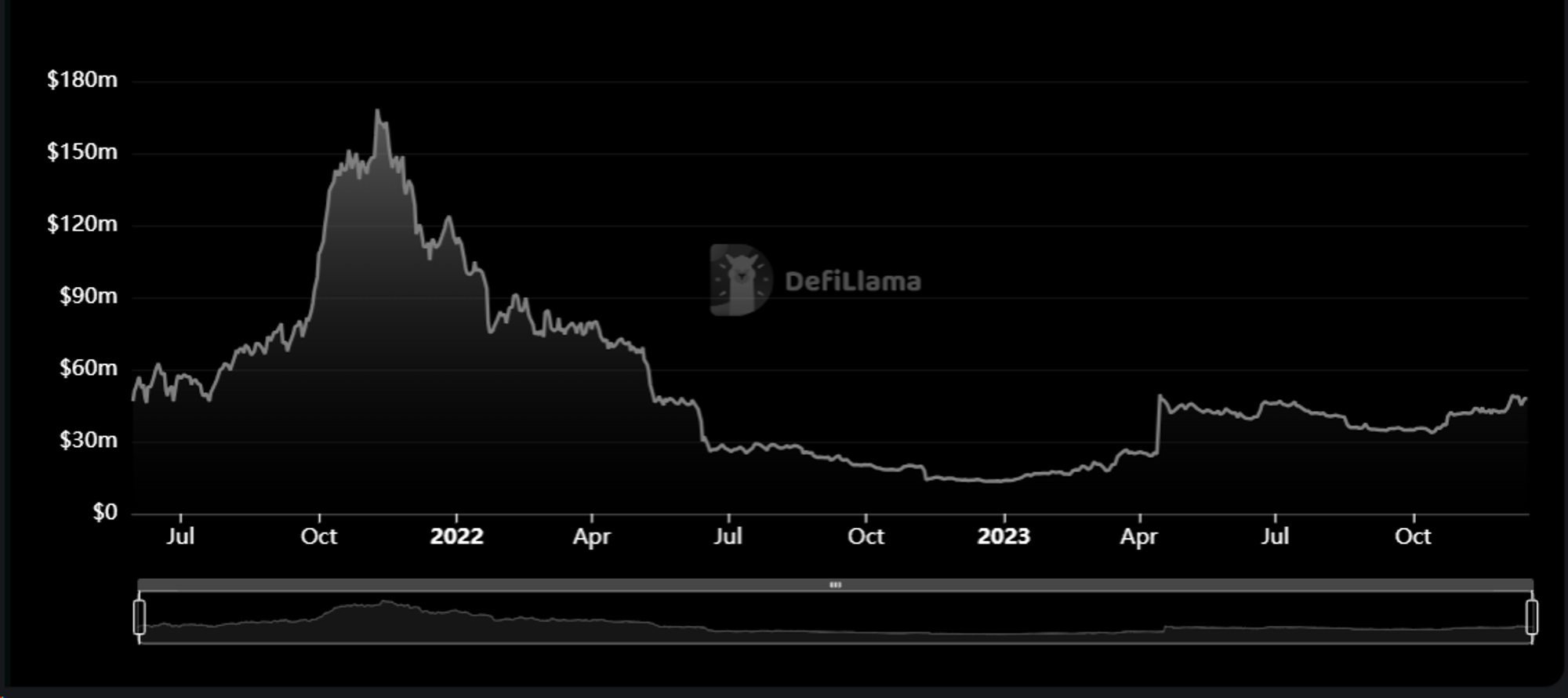
4. Nakamoto Upgrade: New Opportunities for Bitcoin DeFi
Stacks will welcome its next major upgrade, the Nakamoto upgrade, in early 2024. This upgrade will bring three main functional enhancements: (1) decentralized Bitcoin two-way pegging, namely the issuance of sBTC; (2) transactions guaranteed by Bitcoin finality; (3) rapid transactions between Bitcoin blocks. The issuance of sBTC will unlock Bitcoin as a fully programmable productive asset, allowing smart contracts to be trustlessly written into the Bitcoin blockchain, unlocking the application of Bitcoin assets in DeFi.
The main mechanism of sBTC can be summarized as follows: Users send BTC to a pegged wallet/script on the Bitcoin network, and an equivalent amount of sBTC is minted and sent to the Stacks address chosen by the user, maintaining a 1:1 peg; when users wish to send assets back, sBTC will be burned, and BTC will be transferred to the user's address on the Bitcoin network. Since the Bitcoin network lacks Turing completeness, the process of locking BTC requires a custodial wallet/script rather than a smart contract, managed by a group of Signers. After a Peg-out (burning the pegged asset on the anchor chain), the release of BTC must be manually completed by the Signers, thus the Peg-in process is guaranteed by the smart contract on the target chain to ensure the release and transfer of assets, with the key point of BTC pegging lying in the Peg-out process.
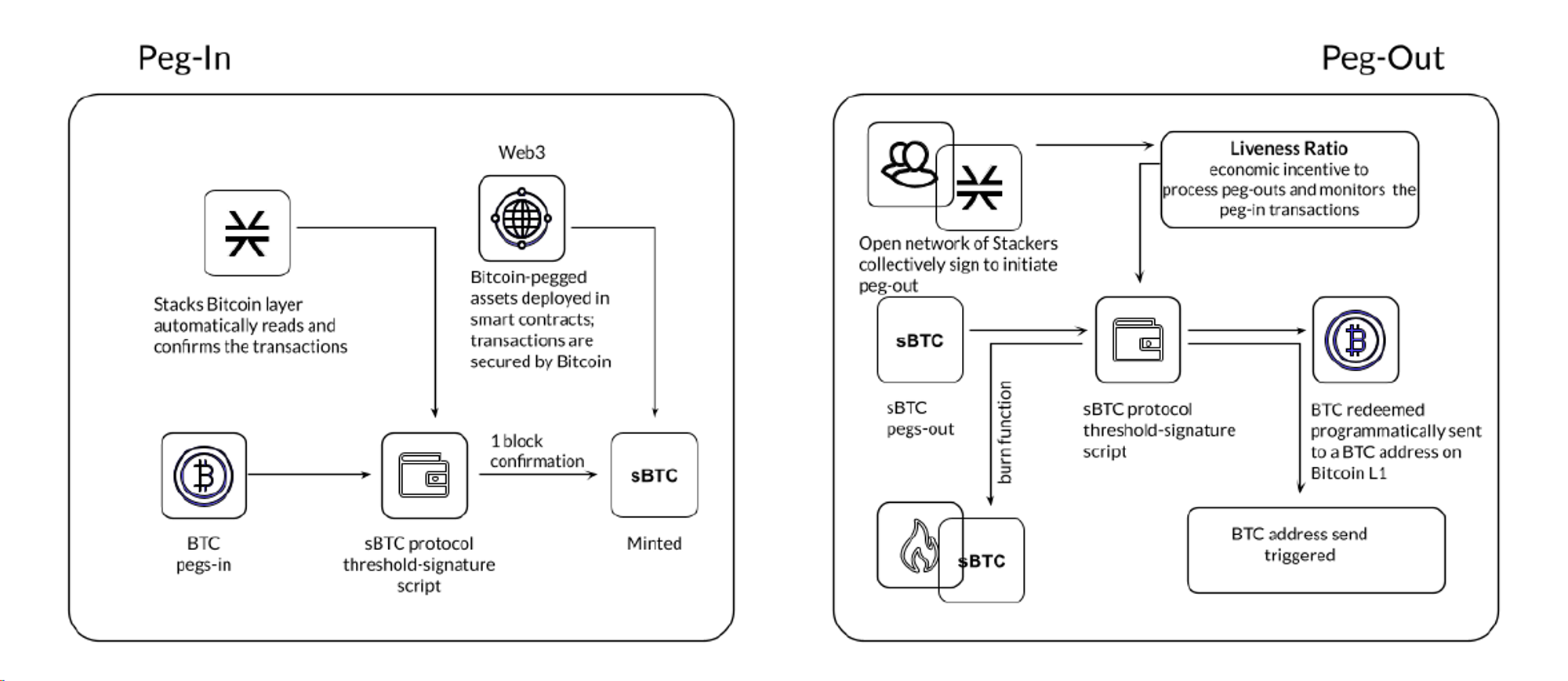
The group maintaining the peg locks STX to execute the threshold signature tasks required to maintain the peg (this threshold is determined by the proportion of STX locked by this group of participants), and upon correctly completing the pegging operation, they will receive BTC as a reward. The permissions for participating in maintaining pegging transactions are open to everyone, and anyone can become a signer for pegging transactions. As a security guarantee, sBTC requires two important thresholds: (1) a signing threshold set at 70%, meaning that security issues will only occur if more than 71% of Stackers act maliciously; (2) Liveness Ratio: the maximum ratio of sBTC supply to the value of STX locked, currently set at a default of 60%. These two values ensure that the locked value of STX signing transactions is greater than the value of BTC being processed, using economic incentives to prevent malicious behavior. Additionally, the selection of signers, Peg-out requests, etc., occur on L1, adhering to Bitcoin's censorship resistance. Stacks can directly read transactions on Bitcoin, which eliminates the need for reliance on external oracles, making sBTC closer to BTC's security.
How will the Nakamoto upgrade and sBTC empower the development of Alex Lab? Firstly, the Nakamoto upgrade will make Stacks transactions more secure and reliable, greatly enhancing network performance. The introduction of subnets will enable support for other programming languages and environments, such as EVM subnets, facilitating project migration and providing conditions for the explosion of ecological projects, reinforcing Stacks' leading position in the Bitcoin ecosystem. As the largest DEX in the Stacks ecosystem, Alex will directly benefit from this enhancement. Secondly, BTC is the most decentralized and secure asset, unlocking the enormous market potential of BTC and bringing BTC into DeFi will greatly enhance the security and legitimacy of DeFi. It should be noted that currently, assets pegged to BTC (such as wBTC on Ethereum) are entrusted to centralized entities or a trusted group of managers, which inherently poses trust issues and goes against the spirit of Bitcoin. In contrast, sBTC is operated by a group of permissionless, decentralized, and dynamic participants, designed to maintain the correct peg through economic incentives. Although risks and complexities are still introduced, it is much closer to BTC's security. Leveraging BTC's immense value and maximizing the introduction of BTC's security will bring a new narrative to DeFi, and Alex, as the leading DeFi application on Stacks, will be the core direct beneficiary of this upgrade. In summary, the Nakamoto upgrade will bring significant performance improvements to Stacks, greatly attracting market attention in terms of narrative and fundamentals. Alex Lab, as the largest application and direct beneficiary protocol, given that the market cap increment space of Stacks is already relatively small, will be the best target for laying out this upgrade. What is the current progress of the Nakamoto upgrade and sBTC? What will the future timeline look like?
In October 2023, Stacks launched the developer version of sBTC, allowing developers to build and test using the early version of sBTC. On December 15, Stacks co-founder announced that the Stacks Nakamoto testnet (codenamed Neon) has completed code writing, and the launch of the testnet by the end of the year has been locked in.
According to the latest timeline released by the Stacks Foundation, the Nakamoto upgrade will be released before the Bitcoin halving. After confirming stability on the mainnet, sBTC will subsequently launch. In the initial version roadmap, Nakamoto and sBTC were planned to be released together, but it is now planned to achieve this through separate upgrades to reduce overall complexity and improve the predictability and security of the upgrade. The team plans to launch the public testnet Argon in the first quarter of 2024, with the Nakamoto upgrade on the mainnet before the Bitcoin halving, and sBTC is expected to go live on Stacks about two months after the upgrade.
However, it should be noted that the Nakamoto upgrade has already experienced two delays, initially planned for completion this summer, then postponed to the end of 2023, and now to Q1 of next year. If the Nakamoto upgrade is not completed before the Bitcoin halving, the expectation may fall short again, and the upgrade narrative cannot overlap with the halving narrative, which may have a certain impact on the overall price of the Stacks ecosystem. Close attention needs to be paid to the progress of Stacks upgrades, with the next key date being the launch of the Neon testnet at the end of December.
5. Tokenomics and Liquidity Distribution
In terms of token distribution, Alex Lab conducted its token issuance in March 2022, with a total token supply of 1,000,000,000 tokens, expected to be fully unlocked within five years (February 2027). The distribution is as follows:
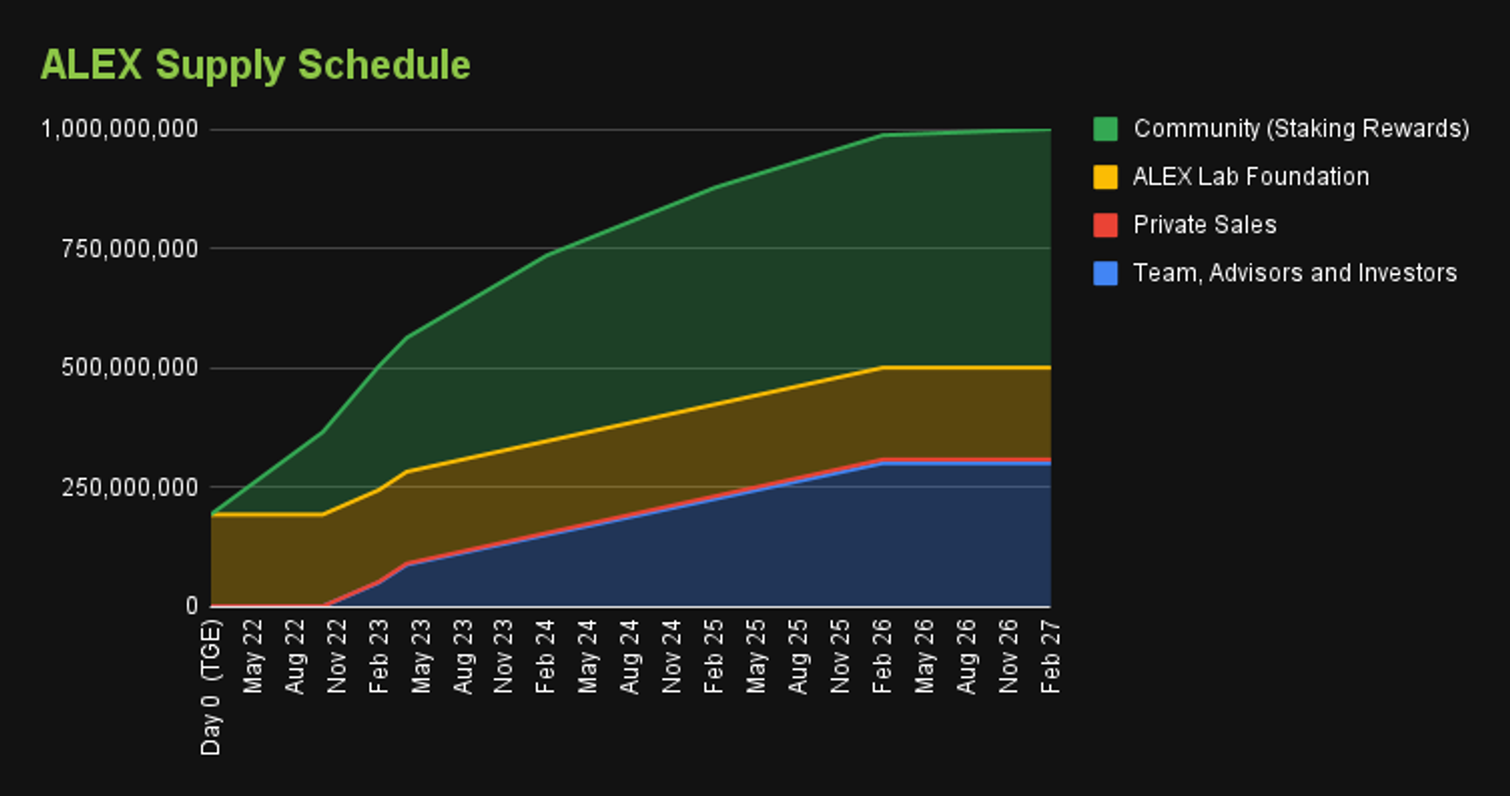
20% to the foundation, allocated to the community reserve pool to support the ALEX ecosystem, early adopters, and future development.
50% reserved for the community, to earn ALEX through staking or providing liquidity tokens.
30% to employees, advisors, early investors, and the founding team.
In terms of token use cases, $ALEX can be used for staking and governance. The yield from staking is significantly related to whether automatic staking is chosen. Currently, a total of 140 million tokens are staked, with an APY of 7.25%. $ALEX and $atALEX (automatically staked ALEX) can participate in community governance voting, including changes to tokenomics, IDO project selection, etc.
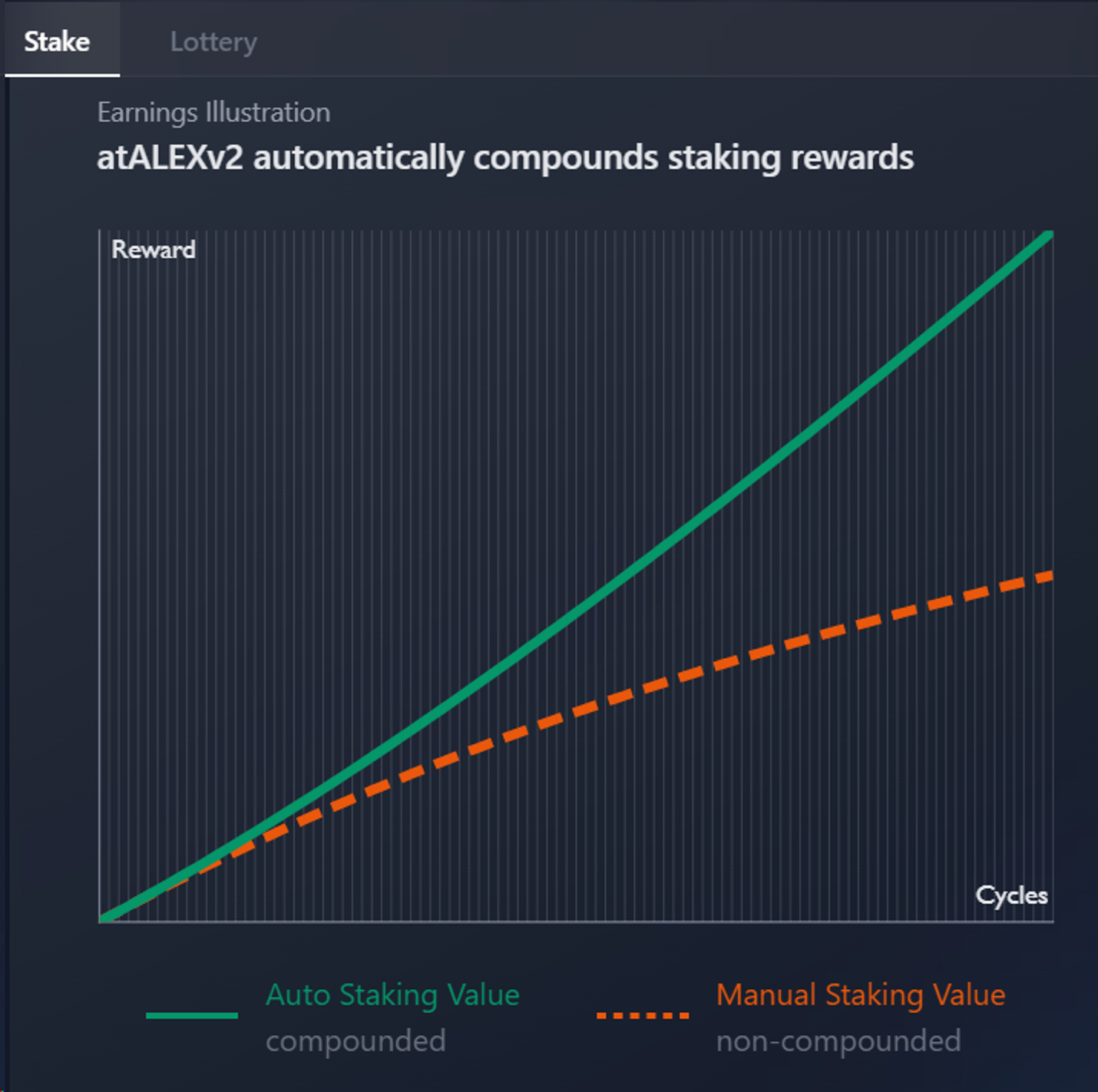
In terms of token performance, $ALEX currently has a market cap of $287,738,006, with an FDV of $439,423,517, and an MC/FDV ratio of 65.48%, indicating a relatively high token circulation ratio. In terms of market cap, ALEX currently ranks 181st, while Stacks has a market cap of $2,079,014,811, with an FDV of $2,645,163,967, making its market cap nearly 8 times that of ALEX. Although Stacks, as a second-layer public chain, has a higher valuation space than ALEX, ALEX is the most developed absolute leading protocol on Stacks, and in the medium term, ALEX can be regarded as a leveraged target for investing in Stacks. (All data is as of 2023/12/21)
In terms of liquidity, ALEX's main trading volume is concentrated on Bithumb, Gate, and Alex AMM, with relatively poor liquidity and has not yet been listed on major exchanges. Recently, various BRC-20 tokens have been listed on Binance and OKX, indicating the current mainstream CEX's attention to the Bitcoin ecosystem. The announcement of listings has led to significant increases in token prices. As the leader of Bitcoin ecosystem DeFi, ALEX has certain listing potential in the future, and the resulting speculation and liquidity improvement will further enhance the price growth potential of $ALEX.
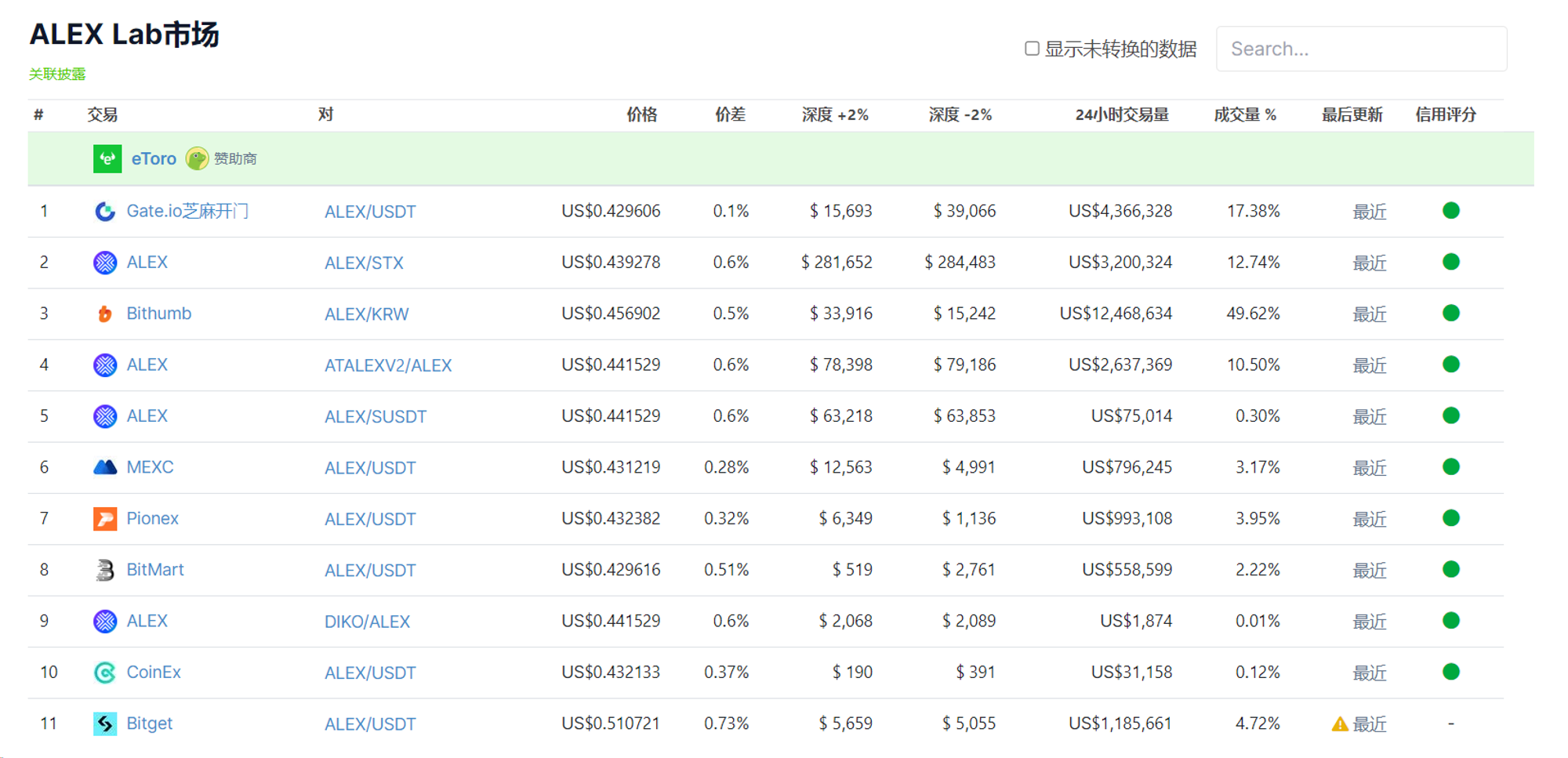
6. Conclusion
In summary, our basic views on Alex Lab can be summarized as follows:
Firstly, under the high popularity of inscriptions and BRC-20 tokens, the BTC ecosystem has the conditions to become the mainstream narrative of the bull market, especially with the upcoming Bitcoin halving in April, which will add higher speculative value to this track. Considering the security and legitimacy of the Bitcoin network, as well as the sustainability of miner incentives, establishing a Bitcoin ecosystem has significant practical implications. DeFi is the cornerstone of the ecosystem, and Alex Lab, as the leader of Bitcoin DeFi, will provide the foundation for the subsequent expansion of the Bitcoin ecosystem.
Secondly, Alex Lab is closely following the development of BRC-20 tokens, rapidly developing on-chain indexing, Orderbook trading markets, and Launchpad for BRC-20, seizing the gap in the lack of infrastructure for BRC-20 tokens and quickly taking the lead, becoming one of the few projects deeply involved in the BRC-20 token narrative with practical products landing, which will unlock more financial use cases for BRC-20 tokens.
Thirdly, in the competitive landscape, Alex Lab is the absolute leader on Stacks. After completing the Nakamoto upgrade, Stacks will further consolidate its leading position as a Bitcoin scaling solution. Compared to the leading Sovryn on Rootstock, Alex Lab has significant advantages in data performance, development progress, and alignment with the BRC-20 narrative. Therefore, in the Bitcoin DeFi space, Alex Lab possesses strong competitiveness and an absolute leading position.
Fourthly, the Nakamoto upgrade is an important event in the Bitcoin scaling field, and the release of sBTC will unlock the potential and value of Bitcoin DeFi, enhancing its security and legitimacy. Alex Lab will be the core target for laying out this event.
Fifthly, considering the market cap and FDV of Alex Lab and Stacks, we believe that in the medium term, ALEX can be one of the leveraged targets for investing in the Stacks ecosystem. Major exchanges are competing for the Bitcoin ecosystem, and the future listing of ALEX tokens will bring more liquidity, effectively boosting its price.
Key areas for subsequent observation of Alex Lab will include: the further development of the Bitcoin ecosystem; whether the Nakamoto upgrade and sBTC peg can meet expectations; the number of BRC-20 token trading pairs supported by Alex Lab, and its position in BRC-20 financial infrastructure; changes in user numbers, trading volume, TVL, and other data; progress on token listings, etc.
About Us
Metrics Ventures is a data and research-driven liquidity fund for the secondary market of crypto assets, led by a team of experienced crypto professionals. The team has expertise in primary market incubation and secondary market trading, actively contributing to industry development through in-depth on-chain/off-chain data analysis. MVC collaborates with influential figures in the crypto community to provide long-term empowerment capabilities for projects, such as media and KOL resources, ecological collaboration resources, project strategies, and economic model consulting capabilities.
Feel free to DM us to share and discuss insights and thoughts on the market and investment in crypto assets.
We are hiring! If you are skilled in crypto asset investment, please contact us at Email: ops@metrics.ventures.
Our research content will be published on Twitter and Notion, welcome to follow:
Twitter: https://twitter.com/MetricsVentures
Notion: https://www.notion.so/metricsventures/Metrics-Ventures-475803b4407946b1ae6e0eeaa8708fa2?pvs=4










